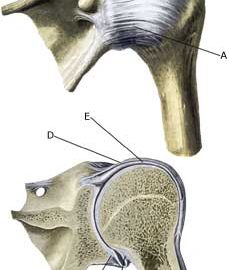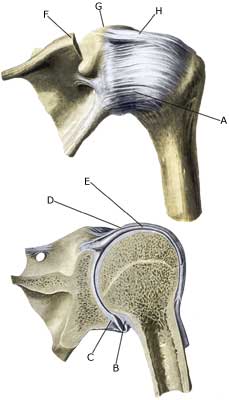|
||
|
||
| Cause: In some cases a powerful strain (fall) can, for unknown reasons, trigger a shrinking of the joint-capsule, reducing the mobility of the joint in all directions. In other cases, the condition arises without preceding damage.
Symptoms: Usually pain in the shoulder (in many cases from an inflammation of the bursa (bursitis subacromialis)). After a few months, movement constriction of the shoulder joint occurs resulting of the reduction of all movement. After a few years (on average 2½ years) pain diminishes and after another few months mobility in the shoulder joint is normalized (article). Examination: Anyone suspecting a frozen shoulder should be medical examined. A normal medical examination is usually sufficient in order to make the diagnosis There is typically movement constriction in all directions, including when the arm is passively rotated outwards. If the shoulder blade is held fixed, only very modest mobility will be possible. Treatment: Since the condition is benign and usually heals spontaneously, treatments with the risk of side effects, should be used with restraint. Usually mild painkillers are recommended (paracetamol) or, if needed, rheumatic medicine (NSAID). In the absence of any effect corticosteroid can be injected into the shoulder joint and the bursa, if inflammed (article). Some have used corticosteroid in pill form. Various operations have been attempted, where the joint capsule is cut through (or split), however, further complications are often associated with these operations, so a certain amount of restraint is advised (article). Complications: The diagnosis should be verified through a medical examination. Amongst other things consideration must be given to:
The physician will also consider an X-ray of the lungs and a glucose measurement, since the condition is described slightly more often in people with lung cancer and diabetes. |


